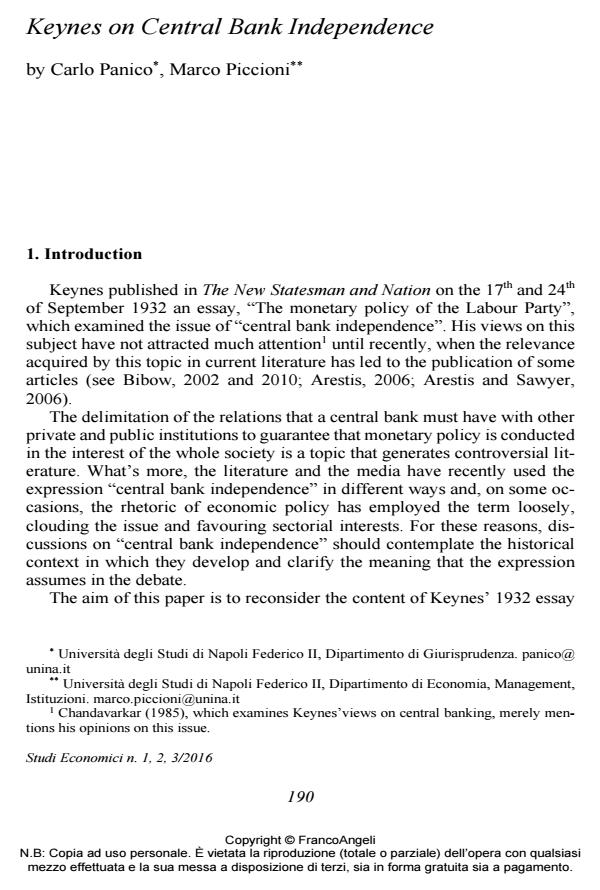Keynes on Central Bank Independence
Journal title STUDI ECONOMICI
Author/s Carlo Panico, Marco Piccioni
Publishing Year 2017 Issue 2016/118-119-120
Language English Pages 27 P. 190-216 File size 263 KB
DOI 10.3280/STE2016-118012
DOI is like a bar code for intellectual property: to have more infomation
click here
Below, you can see the article first page
If you want to buy this article in PDF format, you can do it, following the instructions to buy download credits

FrancoAngeli is member of Publishers International Linking Association, Inc (PILA), a not-for-profit association which run the CrossRef service enabling links to and from online scholarly content.
Keywords: Central bank independence, Monetary policy, Institutional organization of policy
Jel codes: B22, E12, E42, E58, E61
- Independencia del Banco Central: la visión de Keynes, Prebisch, Friedman y Rogoff Germán Vargas Magaña, in Ciencia Económica /2021 pp.32
DOI: 10.22201/fe.24484962e.2021.10.16.3
Carlo Panico, Marco Piccioni, Keynes on Central Bank Independence in "STUDI ECONOMICI " 118-119-120/2016, pp 190-216, DOI: 10.3280/STE2016-118012